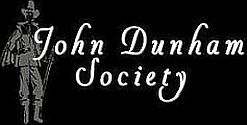Supporting Community Indexing and Cemetery Cleanup
When you visit a cemetery, you'll visually see that it's a landscape filled with various kinds of stone memorials (with several other names such as headstone, monument, shrine, tombstone, gravestone, etc.), with grass and maybe trees around them. What these memorials mean is different that just the visual though, these stones are an ancient way in which we designate a final resting place likely for a family member or community member. The stone marker has their name carved into it with specific known information such as their date of birth and their date of death. This information is meant to remain as a symbol of an individual's life, from start to end, no matter how long or short it was.
So from here on, we will simply call the stone memorials, memorials.
What is indexing? The basics are to take clear photos of the front of memorials to show the individual information. Then move on to the next memorial, and so on. That's easy for smaller cemeteries with 15 to 30 memorials. But what about a 25-section cemetery with over a 1000 total memorials? Well, that requires quite of bit more organization. You'll need a map of the cemetery (Google Earth is good for that), print several copies of the map out. A clipboard and pencil are a must, as well as severak 3X5 index cards (discussed later). And you should be prepared to expect this project to be ongoing perhaps for months. Maybe a good time to find a partner, or group, to help.
